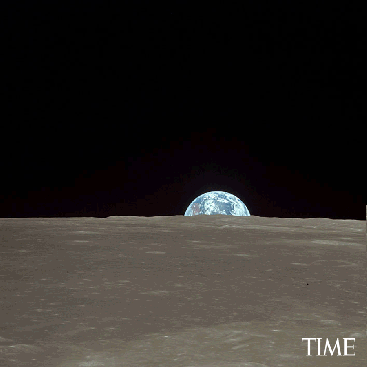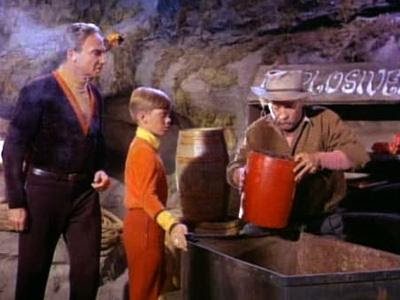Skip to comments.
The US Geological Survey Is Getting Serious About Space Resources and Mining
Space.com ^
| Sept 4, 2018
| Leonard David, Space.com's Space Insider Columnist
Posted on 09/06/2018 9:36:42 AM PDT by ETL
The U.S. Geological Survey (USGS) is starting to earnestly evaluate space resources for future mining.
Since its establishment in the 1870s, the USGS has focused pretty much solely on Earth. But now it's also investigating what benefits may or may not exist in tapping extraterrestrial water, minerals and metals.
The agency seeks to portray accurately how humanity could exploit off-Earth assets — a no-nonsense approach that contrasts with the pie-in-the-sky estimates of trillions of dollars of profit proffered by some less scientifically minded space-mining advocates.
Proven expertise
This past June, several USGS experts took part in a Space Resources Roundtable held at the Colorado School of Mines in Golden, Colorado.
"The space-resources community will benefit greatly from working together with the USGS to assess the location and value of minerals, energy and water on the moon, Mars and asteroids," said Angel Abbud-Madrid, director of the Center for Space Resources at the Colorado School of Mines.
The USGS offers proven expertise and an unbiased, quantitative approach to characterizing terrestrial resources, Abbud-Madrid told Space.com. That know-how "can also lead to reliable and much-needed geological maps for more precise landing-site and resource-deposit selection," he said.
It's also worth noting that the new director of the USGS, Jim Reilly, is a geoscientist and former NASA astronaut. During his 13-year NASA career, Reilly flew on three space shuttle missions, conducted five spacewalks and racked up a total of more than 856 hours in orbit.
Multifaceted issue
The exploitation of space resources is a fascinating and multifaceted issue, said Laszlo Kestay, a research geologist at the USGS Astrogeology Science Center in Flagstaff, Arizona.
"The USGS has been paying steadily increasing attention to the issue of space resources for the last several years," Kestay told Space.com. The drivers for this are diverse, he said. For example, the U.S. human space program seems to be focusing on missions to deep space, where space resources are extremely valuable. Furthermore, commercial efforts to extract space resources are growing in maturity.
Kestay pointed to the USGS' increased responsibility for the Landsat satellites, a venerable series of Earth-observing spacecraft. The USGS is now considered one of the U.S. space agencies, he said.
"The USGS realized that our congressional mandate to assess natural resources extends to space," Kestay said.
At this time, the USGS does not have a funded program to conduct full-scale assessments of space resources. "But we are anticipating that the USGS may be directed to do so soon, and we are taking a number of steps to be prepared for that possibility," he said.
Confidence building
Kestay pointed to the USGS' participation in space-resource workshops. In addition, there's the 2017 "Feasibility Study for the Quantitative Assessment of Mineral Resources in Asteroids" led by Kestay, which found that the water and metal resources of near-Earth asteroids are sufficient to support humanity should it become a fully spacefaring species.
"At this point, we have done enough work to feel confident that the methods the USGS uses to assess mineral, energy and water resources on Earth can be used to assess space resources with minimal modification," Kestay said. "We have also done enough preliminary work to identify some areas where humanity's lack of knowledge will result in exceedingly large uncertainties in assessments undertaken today."
Follow the water
"Lunar ice would be a good example of a resource that we do not understand well enough to provide estimates with much precision," Kestay said.
Attempting such an assessment could still be "useful," he said, because it can identify the most critical information that future missions need to collect.
"It is also perhaps counterintuitive that we have a much better understanding of ice on Mars than on our own moon, but NASA's 'follow the water' strategy [on the Red Planet] has provided a wealth of knowledge," Kestay said. "Finally, it is clear, even before we undertake a full-blown assessment, that there are significant resources in space to assess!"
Lessons learned
No major mining company would undertake the huge cost of developing a new mine on Earth without a detailed resource model, Lawrence Meinert, scientist emeritus for the USGS, told the School of Mines attendees.
"Given the even higher costs of space travel and development, new space resource models and assessment techniques are a prerequisite for practical development of space resources," Meinert said.
Lessons learned from terrestrial exploration, mining and assessment can be applied to space resources, Meinert said. "So it's not just the excitement of new knowledge; there are certain things you need to do. One of them is characterizing what it is you're going to develop," he told Space.com.
Policy, investment decision making
Space-resource assessments will require a combination of remote sensing and physical sampling to better constrain actual asteroid, moon and planetary compositions, at a scale appropriate for resource classification and potential utilization, Meinert said.
"This information can then be used to inform resource-assessment models that have been developed and successfully utilized on Earth," Meinert concluded. "Such model assessments will be foundational to guide policy and investment decisions concerning the emerging field of space resources."
TOPICS: Astronomy; Chit/Chat; Science
KEYWORDS: astronomy; elonmusk; falcon9; falconheavy; moon; science; spacex; themoon; usgs; water


Extracting lunar ice from the bottom of sun-shy craters is deserving of attention. But how much will that cost, what is the quality of the ice and how much of
it is available?

Resource-assessment techniques are required before space mining can become a reality
1
posted on
09/06/2018 9:36:42 AM PDT
by
ETL
2
posted on
09/06/2018 9:37:05 AM PDT
by
ETL
(Obama-Hillary, REAL Russia collusion! Uranium-One Deal, Missile Defense, Iran Deal, Nukes: Click ETL)
To: rktman
3
posted on
09/06/2018 9:39:10 AM PDT
by
Army Air Corps
(Four Fried Chickens and a Coke)
4
posted on
09/06/2018 9:42:12 AM PDT
by
ETL
(Obama-Hillary, REAL Russia collusion! Uranium-One Deal, Missile Defense, Iran Deal, Nukes: Click ETL)
To: ETL; Red Badger; BenLurkin; brytlea; cripplecreek; decimon; disndat; KoRn; Grammy; ...
The agency seeks to portray accurately how humanity could exploit off-Earth assets — a no-nonsense approach that contrasts with the pie-in-the-sky estimates of trillions of dollars of profit proffered by some less scientifically minded space-mining advocates.
IOW, it's probably another anti-US op conducted by Soetero appointees, and the end result of the study will be twofold -- one, that exploitation of off-world resources isn't feasible and can't be profitable, and two, that the US doesn't have any right to do it. Thanks ETL.
5
posted on
09/06/2018 9:56:24 AM PDT
by
SunkenCiv
(www.tapatalk.com/groups/godsgravesglyphs/, forum.darwincentral.org, www.gopbriefingroom.com)
To: ETL
“Kestay pointed to the USGS’ increased responsibility for the Landsat satellites, a venerable series of Earth-observing spacecraft. The USGS is now considered one of the U.S. space agencies, he said.
“The USGS realized that our congressional mandate to assess natural resources extends to space,” Kestay said. “
Yes, if you are included in the satellites designed to map earth, that is clearly a congressional mandate to go to Golden Colorado with a group of you to assess mining minerals in asteroids in space.
This is a bureaucratic fun trip junket to go play in Colorado.
6
posted on
09/06/2018 9:56:36 AM PDT
by
DesertRhino
(Dog is man's best friend, and moslems hate dogs. Add that up. ....)
To: ETL
Something that won’t commence until I’ve been dead 200 years? Yawn.
7
posted on
09/06/2018 9:58:15 AM PDT
by
2ndDivisionVet
(You cannot invade the mainland US. There'd be a rifle behind every blade of grass.)
To: ETL
There is a little oscillation of the view of the Earth from Luna. The Earth definitely does not rise as depicted.
8
posted on
09/06/2018 11:41:17 AM PDT
by
Ozark Tom
To: Ozark Tom
There is a little oscillation of the view of the Earth from Luna. The Earth definitely does not rise as depicted.
The Earth “rose” because the spacecraft was traveling over the Moon’s surface.
An earthrise that might be witnessed from the surface of the Moon would be quite unlike moonrises on Earth. Because the Moon is tidally locked with the Earth, one side of the Moon always faces toward Earth.
Interpretation of this fact would lead one to believe that the Earth’s position is fixed on the lunar sky and no earthrises can occur; however, the Moon librates slightly, which causes the Earth to draw a Lissajous figure on the sky.
This figure fits inside a rectangle 15°48’ wide and 13°20’ high (in angular dimensions), while the angular diameter of the Earth as seen from Moon is only about 2°. This means that earthrises are visible near the edge of the Earth-observable surface of the Moon (about 20% of the surface).
Since a full libration cycle takes about 27 days, earthrises are very slow, and it takes about 48 hours for Earth to clear its diameter.[15]
During the course of the month-long lunar orbit, an observer would additionally witness a succession of “Earth phases”, much like the lunar phases seen from Earth. That is what accounts for the half-illuminated globe seen in the photograph.
https://en.wikipedia.org/wiki/Earthrise#Potential_earthrises_as_seen_from_the_Moon’s_surface
9
posted on
09/06/2018 11:58:39 AM PDT
by
ETL
(Obama-Hillary, REAL Russia collusion! Uranium-One Deal, Missile Defense, Iran Deal, Nukes: Click ETL)
To: SunkenCiv
Can I get in on the IPO for Asteroid Steel Corporation?
10
posted on
09/06/2018 3:29:01 PM PDT
by
henkster
(Monsters from the Id.)
To: 2ndDivisionVet
I agree we’ll both be dead —but space mining won’t take 200 years.
More like 40-50 years.
Accelerating technological change is the reason. Continuously accelerting computer and network speeds also fast forwards event horizons.
The way to understand this in traditional american terms is with the story of thomas jefferson.
He was asked how long it would take to settle the american west after lewis and clark came back from the pacific in roughly 1808.
Jefferson said 3428 years and 150 generations.
Instead it took 100 years and 5 generations.
How did Jefferson come by his numbers and why was he off by so much?
Jefferson figured that it took 200 years to go 175 miles inland from the coast and civilize Charlottesville where he lived. He Learned from Lewis and Clark the USA is 3000 miles across. So he did the math.
Why was Jefferson so wrong?
Because two massive industrial revolutions came along in the 1830’s and 1880’s that brought the railroad, telegraph, the repeating rifle, the industrial revolution.
We are in the midst of an even greater acceleration today.
Likely no later than the 2040 work will begin on generation 1 maglev space launch vehicles. These will take down the cost of putting people into low space orbit to about $5000.
The first 1500 miles off planet is the most expensive part of any space journey.
The equivalent barrier in US history was the appalachian mountains. They were a barrier to westward expansion from 1650 to 1750 when daniel boone found a way through.
Similarly the first 1500 miles to low space orbit has proved to be a barrier. Likely it will be roughly 100 years from the 1950’s to the 2050’s before this expense barrier comes down.
But when it does the earth will look like a fly hatch on a pond in spring with immense numbers of people buzzing off the planet.
imho maglev launchers powered by 4th generation nuclear reactors will likely do the job.
https://phys.org/news/2012-03-maglev-track-spacecraft-orbit.html
11
posted on
09/06/2018 3:35:39 PM PDT
by
ckilmer
(q e)
To: SunkenCiv

Tastes like Stilton!
Disclaimer:
Opinions posted on Free Republic are those of the individual
posters and do not necessarily represent the opinion of Free Republic or its
management. All materials posted herein are protected by copyright law and the
exemption for fair use of copyrighted works.
FreeRepublic.com is powered by software copyright 2000-2008 John Robinson









